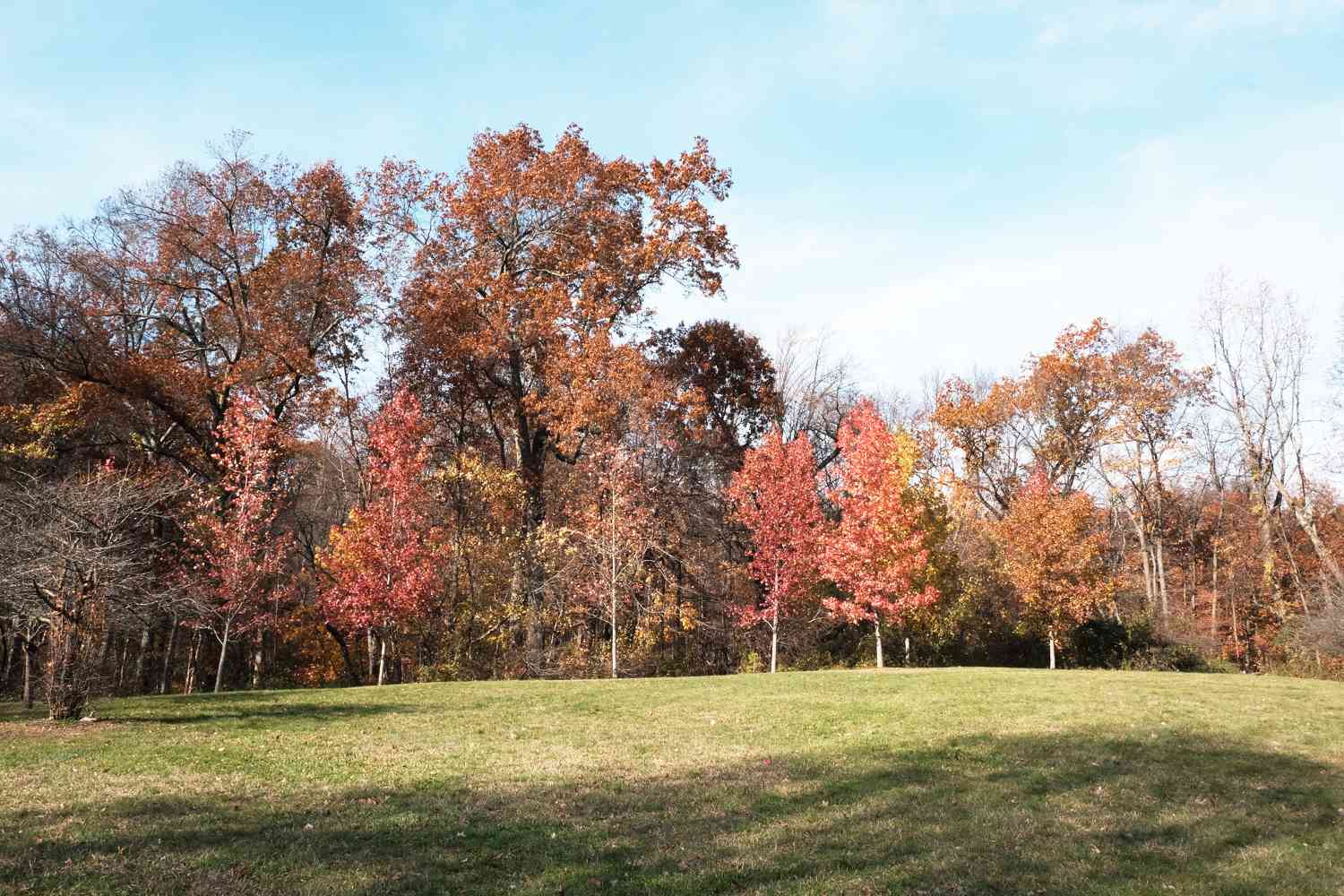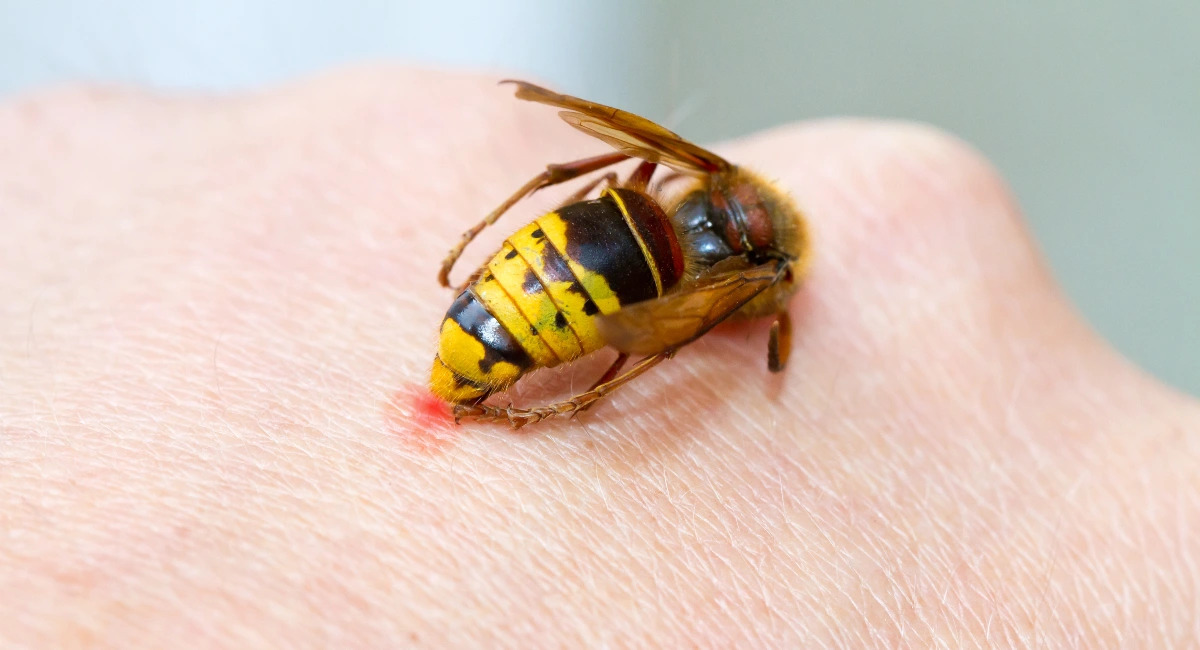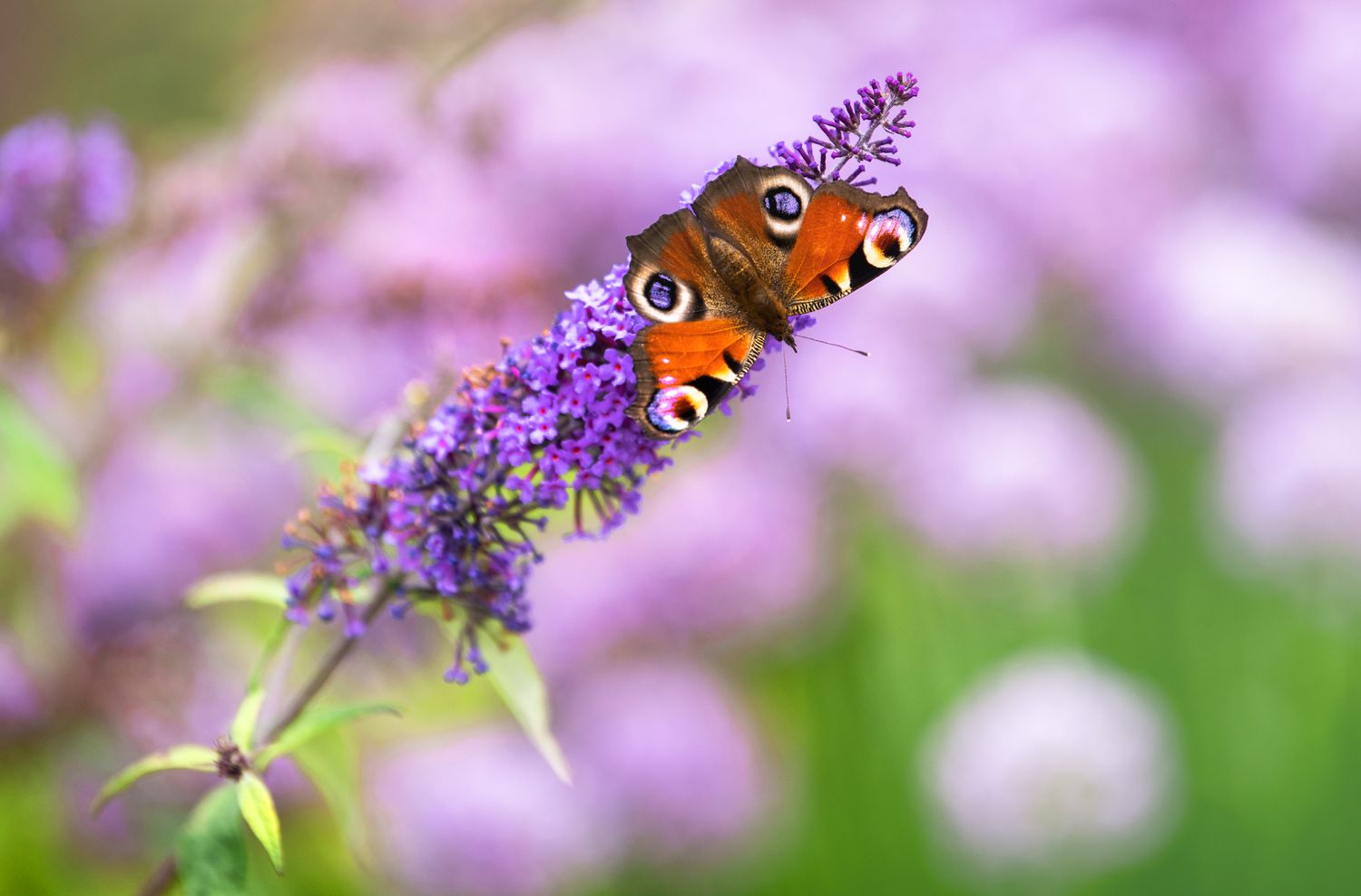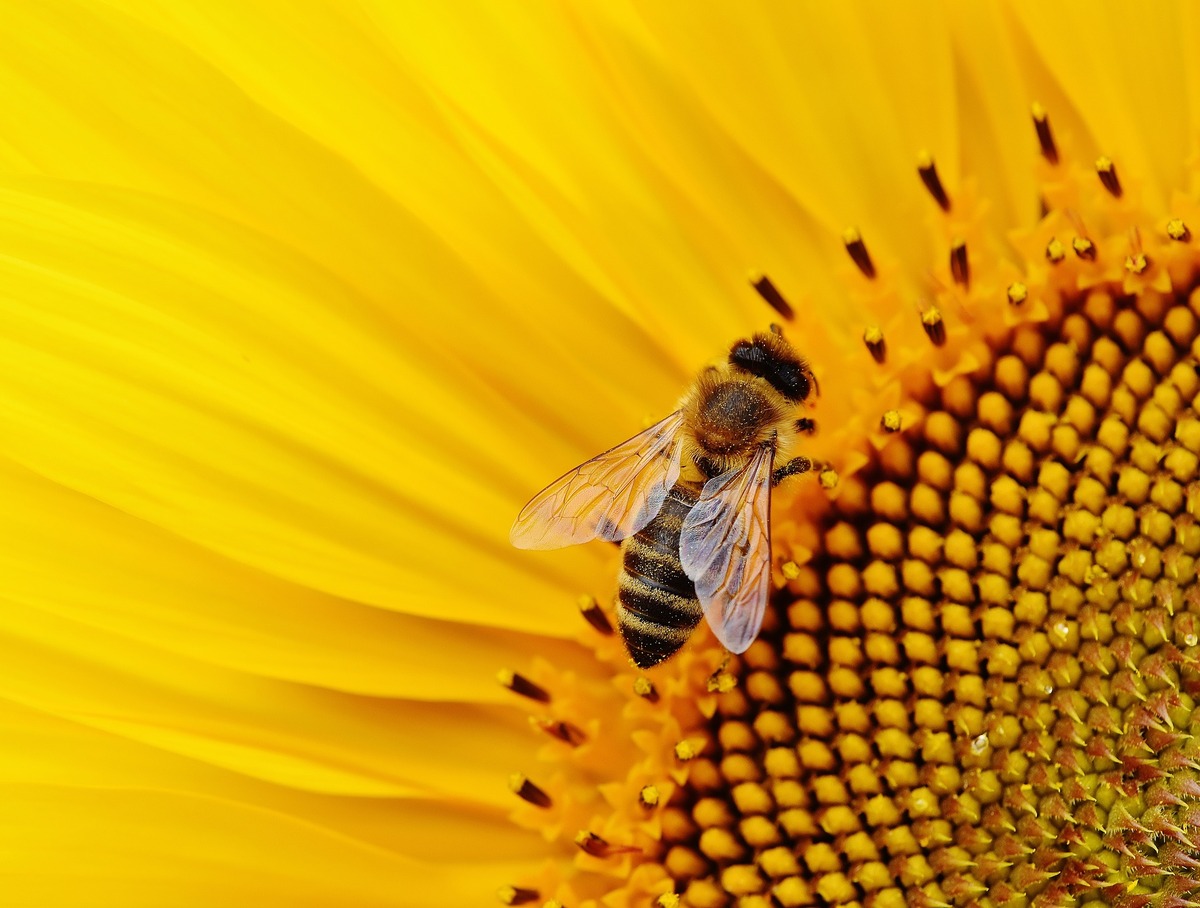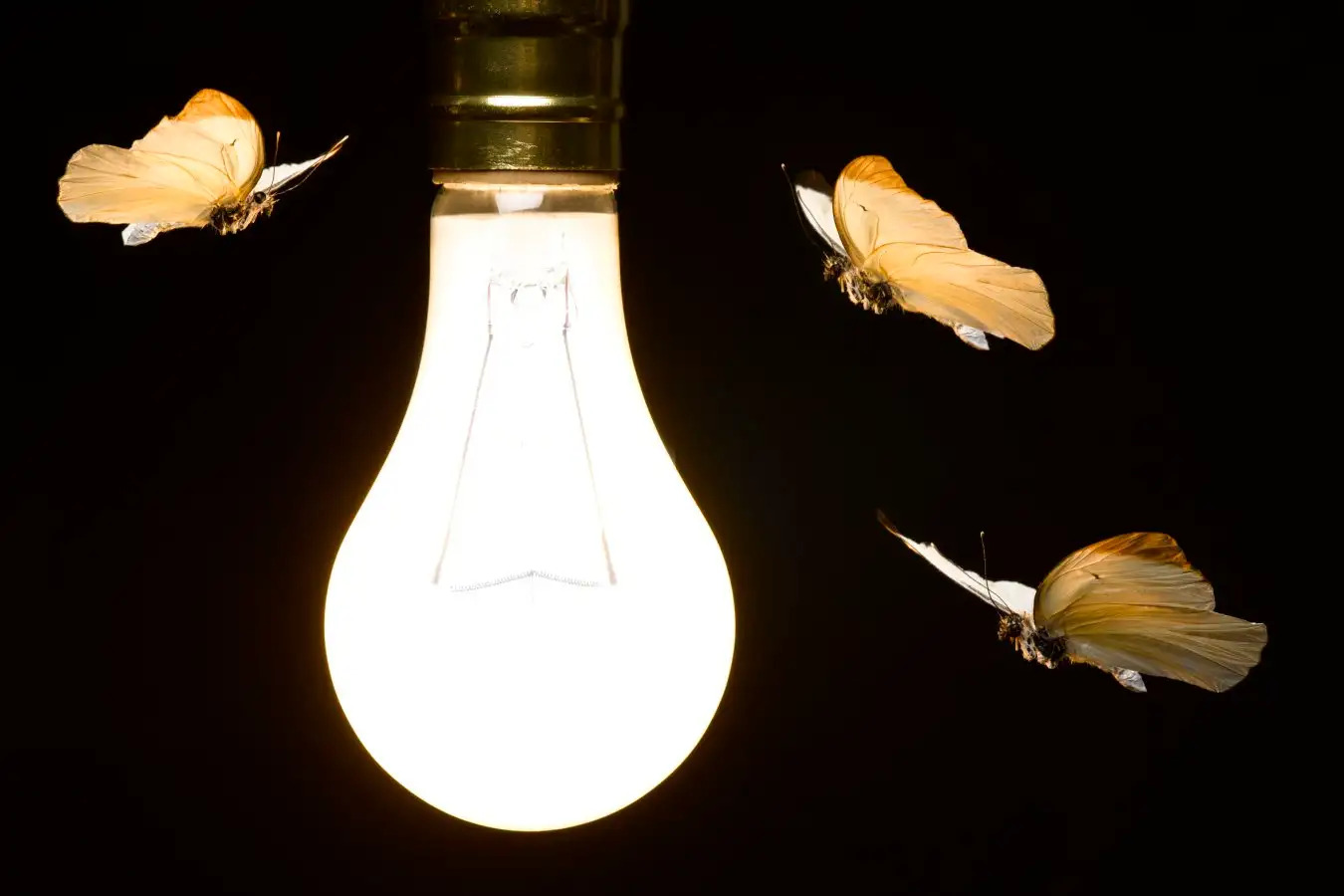Home>Gardening News and Trends>Latest News>What Colors Are Insects Attracted To
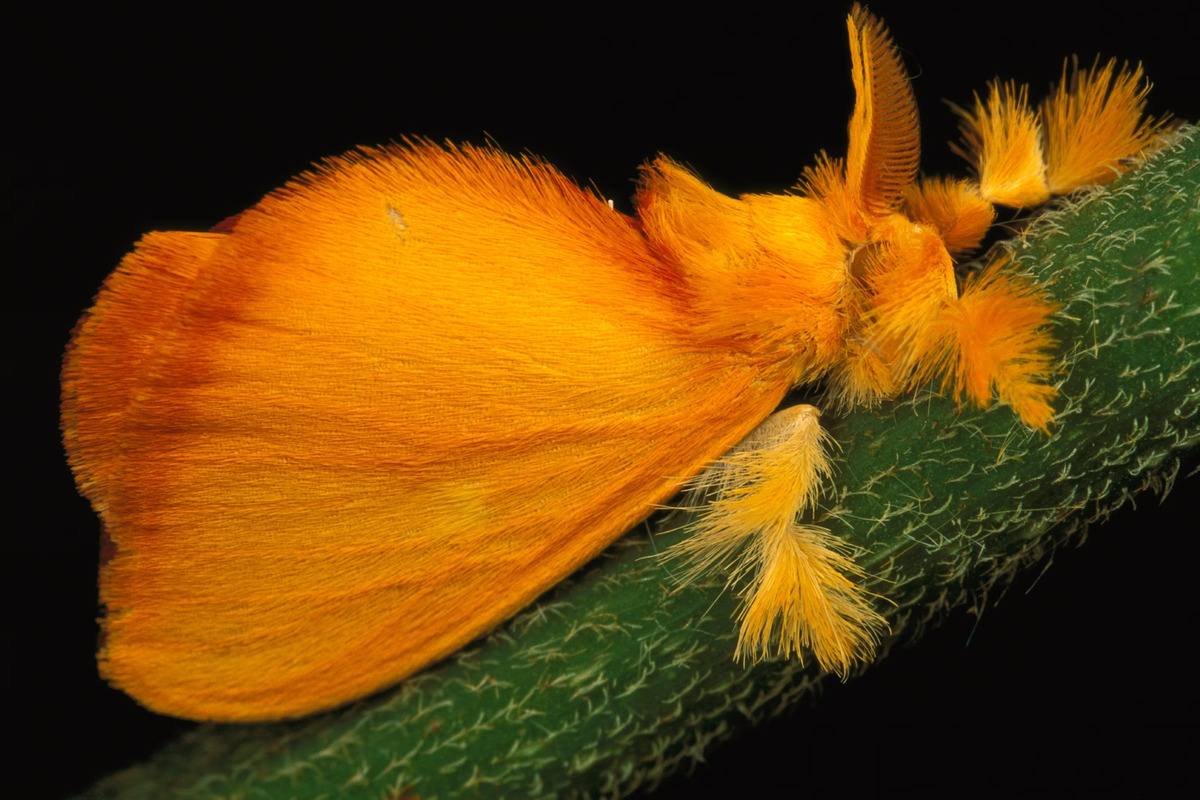

Latest News
What Colors Are Insects Attracted To
Modified: January 22, 2024
Discover the latest news on what colors insects are attracted to and learn why certain hues capture their attention. Dive into the fascinating world of insect behavior and color preference.
(Many of the links in this article redirect to a specific reviewed product. Your purchase of these products through affiliate links helps to generate commission for Chicagolandgardening.com, at no extra cost. Learn more)
Table of Contents
Introduction
When it comes to insect attraction, colors play a significant role. Insects, like bees, butterflies, and beetles, have the ability to perceive a wide range of colors. The colors they are attracted to vary depending on factors such as the species, their visual receptors, and their foraging habits.
Insects are highly visual creatures and rely on visual cues to find food, mates, and suitable habitats. Their color perception can guide them towards specific resources and help them navigate their environment. Understanding the colors that attract or repel insects is crucial for various reasons, including agriculture, pest control, and conservation efforts.
While humans perceive colors differently from insects, studies have shown that certain colors have a universal appeal to many insect species. These attractive colors often mimic floral displays and can be found in flowers, fruits, or other food sources that insects rely on.
In this article, we will explore the factors that affect insect attraction to colors and delve into the specific colors that attract or repel them. We will also discuss the significance of understanding insect attraction to colors and how this knowledge can be applied in various fields. So, let’s dive in and discover the fascinating world of insect color preferences.
Factors Affecting Insect Attraction to Colors
Several factors influence insect attraction to colors. One primary factor is the visual receptors of the insects themselves. Insects often have different visual systems compared to humans, allowing them to perceive colors and ultraviolet (UV) light that are invisible to us.
The shape, size, and placement of color patches on flowers or other objects also impact insect attraction. For instance, bees are attracted to flowers with large, open petals that provide easy access to nectar and pollen. They are more likely to visit flowers with contrasting colors, such as a dark center and light petals, which help guide them towards the nectar-rich rewards.
Furthermore, color contrast against the background is crucial. Insects are more likely to notice and be attracted to colors that stand out against their surroundings. For example, butterflies are drawn to bold and bright colors that contrast with green foliage.
Additionally, the intensity and saturation of colors can influence insect attraction. Many insects are more attracted to vibrant, saturated colors as they signal the quality and abundance of resources. However, some insects, such as certain fly species, are attracted to decaying matter and are more responsive to dull or muted colors.
Another important factor linked to insect attraction to colors is their foraging preferences. Different insect species have varying feeding habits, with some being generalists and others specializing in certain types of food. For example, bees are often attracted to blue and purple flowers due to their preference for nectar-rich flowers, while butterflies are more attracted to red and orange flowers that provide ample nectar for their long proboscis.
It’s important to note that not all insects are attracted to the same colors. Each species has its own specific color preferences based on their ecological niche and evolutionary history. Therefore, it’s crucial to consider these factors when studying and understanding the intricacies of insect attraction to colors.
Attraction of Insects to UV Light
In addition to colors, many insects are highly attracted to ultraviolet (UV) light. UV light, which is invisible to the human eye, holds a magnetic appeal for several reasons.
Firstly, many flowers have specialized UV patterns known as nectar guides. These patterns direct insects towards the source of nectar by reflecting UV light in unique ways. For example, bees can see UV light and use the patterns as visual cues to locate the nectar-rich areas of a flower.
Secondly, UV light can be a powerful signal for insects in finding mates. For instance, some butterflies have UV-reflecting patches on their wings, which serve as visual signals indicating their availability and attractiveness to potential partners.
Additionally, certain insects, such as mosquitoes and other flying pests, are attracted to UV light sources, such as outdoor lights or bug zappers. The reasons behind this attraction are not fully understood, but it is believed that these insects mistake UV light for natural sources like the moon or open spaces, leading them to approach these light sources.
It’s important to mention that not all insects are attracted to UV light. Each species has its own individual preferences, and some may even show aversion to UV light. Therefore, while UV light can be an effective tool in attracting certain insects, it may not be universally attractive.
Understanding the attraction of insects to UV light can have practical applications, such as using UV light traps to monitor and control insect populations, especially those that are pests or disease vectors. Additionally, research into the mechanisms behind insect attraction to UV light continues to shed light on the remarkable visual capabilities of these fascinating creatures.
Colors that Attract Insects
Certain colors have been found to attract a wide array of insect species. These colors often mimic the hues found in flowers and fruits, which are the primary food sources for many insects. Understanding these attractive colors can provide valuable insights for various fields, including pollination, pest management, and conservation.
One of the most commonly attractive colors for insects is yellow. Bees, for example, are highly attracted to yellow flowers due to their sensitivity to colors in the green and blue spectrum. Yellow flowers often have a high contrast against the surrounding foliage, making them stand out and catch the attention of bees. In fact, many commercial beehives are painted yellow to help attract foraging bees.
Another color that attracts insects, especially butterflies and hummingbirds, is red. Red flowers are often associated with abundant nectar, making them a valuable resource for these nectar-feeding insects. The vibrant and bold nature of red also helps in attracting them from a distance.
Blue and purple colors are particularly attractive to bees and butterflies. These colors convey a sense of freshness and abundance, which indicates a potential food source. Many flowers that attract bees, such as lavender and borage, have blue or purple petals that stand out and entice these insects to land and collect nectar.
White and pale-colored flowers also have their share of insect attraction. Moths, for example, are known to be highly attracted to white flowers that are usually pollinated at night. The pale colors of these flowers become more prominent in low-light conditions, making them visible to nocturnal flying insects.
Lastly, it’s worth mentioning that ultraviolet (UV) colors, although invisible to the human eye, are highly attractive to many insects. As mentioned earlier, flowers often have UV patterns that guide insects towards their nectar. These patterns can be found on petals, central markings, or even in the nectar guides that lead insects to the flower’s reproductive organs.
By understanding the colors that attract insects, we can design and implement strategies to attract beneficial insects for pollination, as well as develop effective methods for monitoring and trapping pest species. This knowledge also plays a crucial role in creating insect-friendly environments that support biodiversity and conservation efforts.
Colors that Repel Insects
While certain colors can attract insects, there are also colors that have been found to repel them. These repellent colors can be utilized to deter pests and reduce their presence in specific areas.
One color that is often associated with insect repellence is white. Many insects, including mosquitoes and other biting flies, are known to avoid white-colored surfaces. This is because white reflects light more effectively, making it difficult for these insects to land and feast on potential hosts. Additionally, white-colored clothing may make people less attractive targets for bug bites.
Another color that acts as a natural insect repellent is light blue. This color is often avoided by insects, particularly flies and mosquitoes. Light blue is believed to mimic the sky or open water, giving the impression of an inhospitable environment for these pests.
Green is a color that, contrary to popular belief, does not repel insects as effectively as other colors. Insects, especially caterpillars and grasshoppers, are often well-adapted to green foliage and may go unnoticed due to their own natural camouflage. However, it’s important to note that certain shades of green, such as lime or chartreuse, may have an irritant effect on some insects.
One color that is generally avoided by insects is black. Black surfaces absorb heat, making them less attractive for insects seeking cool areas. However, some exceptions may exist, as certain insects that are attracted to decaying organic matter may still be drawn to dark-colored surfaces.
It’s crucial to remember that while repellent colors can help deter insects, they may not provide foolproof protection. Repellent colors should be used in conjunction with other pest control measures, such as eliminating breeding sites, using insect repellents, and employing physical barriers to reduce exposure to insect bites.
Understanding the colors that repel insects can be beneficial in various scenarios. It allows us to choose colors for clothing, fabric, and surfaces that may discourage insect landings. This knowledge can also influence the selection of colors for outdoor spaces, such as patio furniture, where people congregate and aim to minimize pest interference.
By incorporating repellent colors into our environment, we can create more comfortable and pest-free areas while reducing the risks associated with insect bites and potential disease transmission.
Importance of Understanding Insect Attraction to Colors
Understanding the factors that influence insect attraction to colors is of great significance in various fields and can have wide-ranging implications. Here are some key reasons why understanding insect attraction to colors is important:
Pollination: Insects, such as bees and butterflies, play a crucial role in pollination, which is vital for the reproduction of many plant species. By understanding the colors that attract these pollinators, we can design gardens and agricultural practices that promote effective pollination. This knowledge helps ensure the viability and diversity of plant populations.
Pest Management: Insects can cause significant damage to crops, gardens, and structures. Understanding which colors attract pests can aid in the development of targeted pest control methods. By using colors that repel specific pests, we can reduce their presence and minimize damage without relying solely on harmful chemicals.
Conservation: The study of insect attraction to colors can be instrumental in conserving vulnerable and endangered insect species. By identifying the colors and patterns that are attractive to rare or threatened insects, we can create habitats and conservation efforts that specifically cater to their needs. This knowledge helps protect and preserve these important members of ecosystems.
Human Health and Safety: Certain insects are carriers of diseases that can affect human health. Understanding the colors that attract disease-carrying mosquitoes, ticks, and flies can aid in the implementation of strategies to reduce their presence in areas frequented by people. By using colors that repel these vectors, we can decrease the risk of disease transmission and improve public health.
Design and Aesthetics: The knowledge of insect attraction to colors can also help in designing visually appealing landscapes, gardens, and outdoor spaces. By selecting colors that attract beneficial insects for pollination or repel nuisance pests, we can create environments that are both aesthetically pleasing and functional.
Education and Awareness: Understanding insect attraction to colors enhances our overall knowledge of insect behavior and ecology. This knowledge can be shared and utilized in educational programs, nature conservation efforts, and citizen science initiatives. By raising awareness about the role of colors in insect attraction, we can empower individuals to take action in protecting and conserving insect populations.
By comprehending insect attraction to colors, we can harness this knowledge to make informed decisions in various fields, including agriculture, pest management, conservation, human health, and design. Through the integration of this knowledge, we can create harmonious and sustainable ecosystems that benefit both insects and humans alike.
Conclusion
The role of colors in insect attraction is a fascinating and intricate field of study. Insects have evolved the ability to perceive and respond to a wide range of colors, which helps them find food, mates, and suitable habitats. By understanding the factors that influence insect attraction to colors, we can make significant strides in diverse areas, including pollination, pest management, conservation, human health, design, and education.
Colors can both attract and repel insects, depending on various factors such as species, visual receptors, foraging habits, and ecological niches. Certain colors, such as yellow, red, blue, and UV patterns, have been found to be highly attractive to many insect species. These colors often mimic the hues found in flowers and fruits, which serve as vital food sources for insects.
Conversely, colors like white and light blue can act as natural repellents for certain insects, particularly those that are pests or disease vectors. These repellent colors help create environments that are inhospitable or unattractive to insects, reducing their presence and potential harm.
The understanding of insect attraction to colors has practical applications that can be beneficial in various fields. By harnessing this knowledge, we can design gardens and agricultural practices that promote effective pollination, develop targeted pest control methods, conserve endangered insect species, improve human health and safety, create aesthetically pleasing outdoor spaces, and raise awareness about insect behavior and ecology.
In conclusion, the study of insect attraction to colors not only provides valuable insights into the fascinating world of insect vision, but also enables us to make informed decisions and implement strategies for a more harmonious coexistence with these important creatures. By leveraging the power of colors, we can enhance our understanding and appreciation of insects while striving for sustainable and balanced ecosystems.
